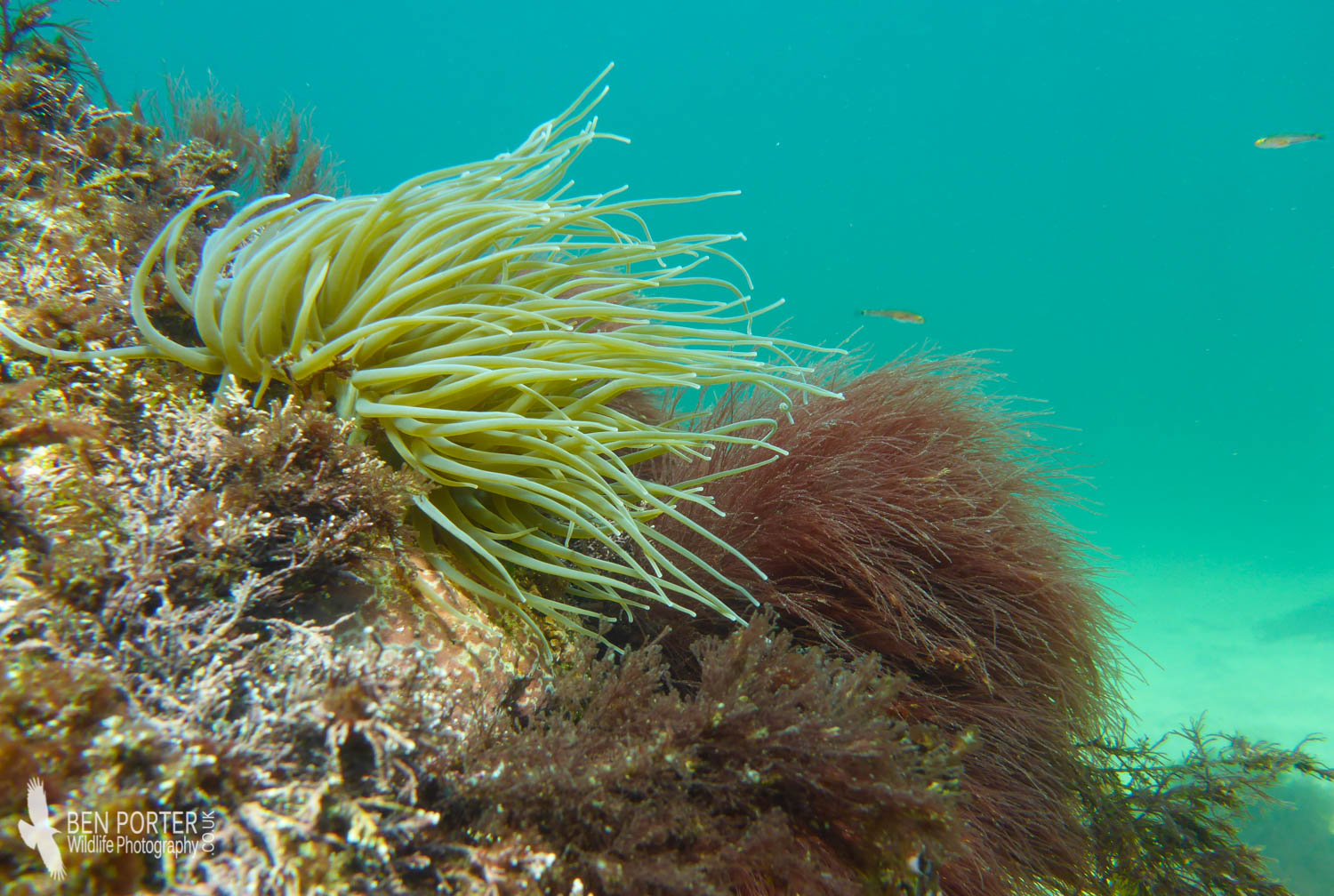For my 16th advent calendar post, I am focussing on something a bit different...the Snakelocks Anemone (Anemonia viridis). This anemone species is distributed throughout the UK's coastal waters, and occurs as far south as the Mediterranean. Anemones such as the Snakelocks are a member of the class Anthozoa, within the clade Cnidaria. Cnidarians include jellyfish and other familiar animals, most of which have the ability to sting their prey using specialised cells called nematocysts. These nematocysts, or cnidocytes, contain a coiled organelle much like a coiled spring; when triggered, this structure uncoils rapidly and penetrates the skin of the prey, like a mini hypodermic needle. The toxin is then inject within milliseconds of impact.
The cool thing about the Snakelocks Anemone is that, in shallow waters and rock pools that are well-illuminated, they assume a symbiotic relationship with an algae called Zooxanthellae. The algae are able to photosynthesise, converting sunlight into energy which benefits the anemone. The algae give the purple tips that are common in many of the anemones, and the tentacles take up a bright green colouration due to a green fluorescent protein. However, where sunlight is less penetrating in the deeper coastal waters, the anemones do not utilise the algae and are thus a duller grey colour; this seems to be the typical appearance of most of the ones I have seen whilst snorkelling around Bardsey.





No comments:
Post a Comment